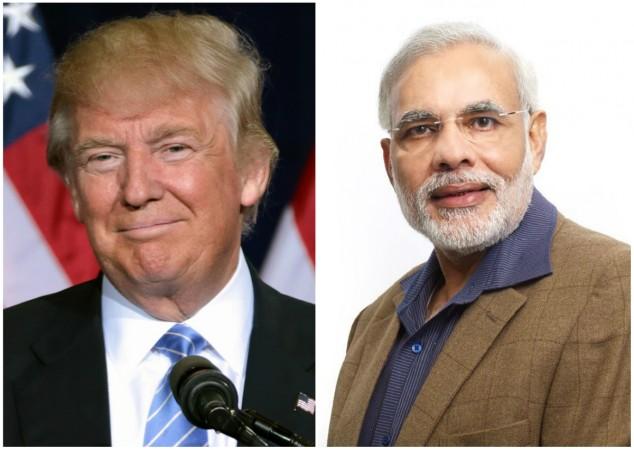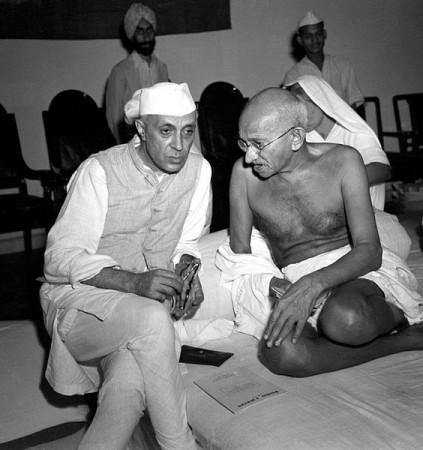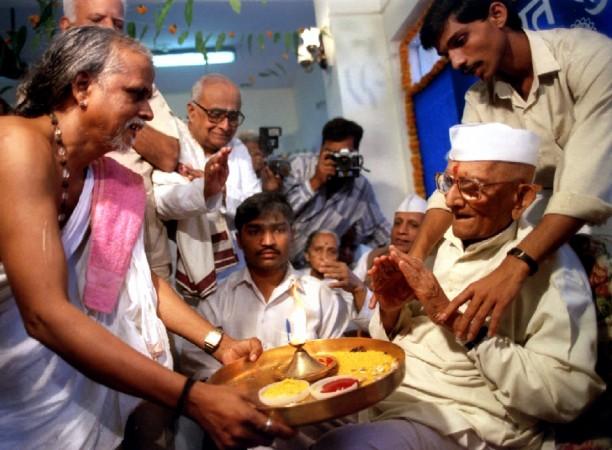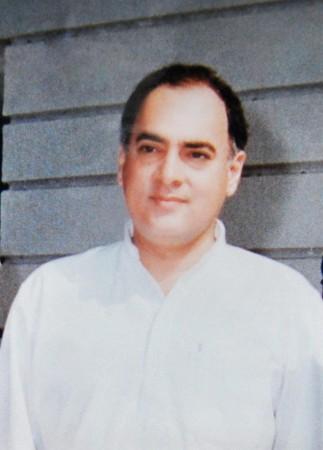
Prime Minister Narendra Modi is set to meet US President Donald Trump on June 26. The world will keep a close watch on the development: whether the two large democracies will continue to align their interests as it was seen during Barrack Obama's time or whether the NamObama legacy will be a thing of the past.
It is still some weeks before we will know the outcome of the meeting. We can, however, use this opportunity to look at the past visits of Indian prime ministers to the United States, starting from Jawaharlal Nehru, the man who had quite a paradoxical view of things that are western.
Jawaharlal Nehru's visits to US
Nehru had made four visits to the US between 1949 and 1961 and the most crucial of them was the visit of December 1956. In 1949, Nehru, as the premier of a two-year-old nation, travelled across the US and explained the tenets of his government's foreign policy. The trip was a success in terms of public relations but Nehru did not really win much during his meeting with the then US president Harry S Truman. The latter had even refused to help India with food and other economic aid. The 1949 trip also saw Nehru addressing the US Congress, something that his successors did in the subsequent years.

It was Nehru's next visit in 1956 which was more meaningful for India-US relations. Nehru spent a day-and-half at the Gettysburg farm of Dwight D Eisenhower, the then president of the US, and they held talks for about 14 hours. In the following few years, the Eisenhower administration increased the economic aid to India to a huge $822 million and sanctioned the PL480 programme. Three years later, Eisenhower reciprocated with a visit to India and it was hugely successful.
Nehru's 1960 visit was to the UN General Assembly while he paid his final visit to the US in 1961 though it was far less satisfying. At 71 and having served the country for 14 continuous years, Nehru was a tired leader while the US leader in John F Kennedy was young and energetic at 44. Kennedy, who however had seen the end before Nehru as he was assassinated, felt Nehru's visit was the "worst state visit ever". However, Kennedy's administration had increased aid to India.
Indira Gandhi's visits to US
Indira Gandhi paid her first visit to the US just two months after taking over as the prime minister. The then American president, Lyndon B Johnson, was impressed by Indira's personality but though Washington pledged more food and development aid to India. But New Delhi's non-commitment to the Vietnam war and criticism of the American bombing in the Asian countries left the US leadership livid and the food shipments were put under a tight leash.
Indira's next visit to the US was in 1971 when the humanitarian crisis in the then East Pakistan (Bangladesh today) took a grave shape and India was facing a massive entry of refugees from the eastern border. Indira had tried to convince the US, which was led by Richard Nixon then, about the West Pakistanis' endless torture on the East Pakistanis but the US, which was then having close ties with Pakistan and China then, did not give Indira much significance.

The late prime minister's personal terms with Nixon were also not great. India sought help from the former USSR as a result and soon the war broke out in which the US was clearly on the side of the Pakistan. It was during Indira's visit to the US that she had rebuked Nixon for not mentioning the atrocities being committed in East Pakistan. The very next day, Nixon had made Indira wait for 45 minutes for a meeting.
Indira's third and final visit to the US which happened in 1982 saw a marked improvement over the 1971 one. Indira was in favour of improving relations with the West then and signed agreements on science and technology and also a deal on a nuclear plant in Tarapur. Besides, it was also decided that the year 1985 would be observed as the 'Year of India' in the US. Indira, however, was assassinated two years after her last visit to the US which was then led by Ronald Reagan.
Morarji Desai's visit to US in 1978
Morarji Desai became the first non-Congress prime minister to visit the US in June 1978, a few months after the then US president Jimmy Carter visited India. It was a decent affair although the Americans were not much keen to provide uranium for the Tarapur nuclear plant.

Rajiv Gandhi's visits to US

The final member of the Nehru-Gandhi family who had visited the US as India's prime minister was Rajiv Gandhi.
His first visit in 1985 was a more eventful one compared to the final one in 1987. After Nehru, he was given the honour to address the US Congress.
The charismatic leader was in favour of improving relations with the US and found a more receiving audience than either his grandfather or mother did. He had initiated the process to buy Cray supercomputers for weather research.
The 1987 visit was a relatively quiet affair. In October 1985, Rajiv had gone to the US to address the UNGA.
PV Narasimha Rao's visits to US
This was the first time an Indian PM visited the US post-liberalisation and PV Narasimha Rao's visit to the US happened at a time when the relations between New Delhi and Washington were very low. The US had, time and again, questioned India's human rights records in Jammu and Kashmir and Punjab as well as it nuclear weapons policy.
Washington also put pressure on Russia to not sell to India the cryogenic technology and also did not approve of India's missile programme. But Rao initiated a paradigm shift in India's foreign policy, away from the Non-Alignment days.
With the Cold War over and the traditional ally USSR a thing of the past, India found it less problematic to improve its relations with India and Rao's May 1994 visit (the other visit was in January 1992 when he attended the UNGA) and was crucial in laying the foundations on which his successors built in the later years.
IK Gujral's visit to US
Gujral was prime minister for less than a year but he paid a visit to the US in September 1997 to attend the UNGA session. He had a meeting with the then US president Bill Clinton who had assured him that Washington would not interfere in any issue that New Delhi has with Islamabad.
Atal Behari Vajpayee's visits to US
Atal Behari Vajpayee, the first BJP prime minister, had visited the US four times between 2000 and 2003 with the final one being the one to the UNGA. It was during these visits that India and US came really closer. Vajpayee had done a fantastic job in defending India's 1998 nuclear tests that had earned her brickbats from the world and turned the table around by improving economic ties with the US.

He had even termed India and the US as "natural allies", something which the traditionalists had not taken lightly.
The 9/11 terror attacks in the US and the December 2001 attacks on India's parliament also brought India and the US closer in the fight against terror.
India had found its dearest American president in George W Bush and the Vajpayee era had seen the two sides coming really closer – economically, diplomatically and strategically.
Manmohan Singh's visits to US
Manmohan Singh made the most number of visits to the US (eight including in several capacities) and his stint in the office had seen the India and the US coming nearest to each other. The July 2005 visit by Singh was very significant as the joint statement issued after the Singh-Bush meeting was built on the 'Next Steps in Strategic Partnership' signed in January the previous year.
The statement also saw the two countries going for the civil nuclear cooperation and strengthening ties in defence and energy. Singh's honeymoon with the US had continued even after the change of guard in Washington as Barrack Obama was equally interested in developing ties with India.
Singh's visits to the US took place in September 2004 (UNGA); July 2015 (official visit); September 2008 (working visit); November 2008 (G20 summit); September 2009 (G20 summit); November 2009 (official visit); April 2010 (Nuclear Security Summit) and September 2013 (working visit).














